Quantum critical behavior in Ce(Fe0.76Ru0.24)2Ge2
- PMID: 38712021
- PMCID: PMC11071051
- DOI: 10.1103/PhysRevB.99.195113
Quantum critical behavior in Ce(Fe0.76Ru0.24)2Ge2
Abstract
Systems with embedded magnetic ions that exhibit a competition between magnetic order and disorder down to absolute zero can display unusual low-temperature behaviors of the resistivity, susceptibility, and specific heat. Moreover, the dynamic response of such a system can display hyperscaling behavior in which the relaxation back to equilibrium when an amount of energy is given to the system at temperature only depends on the ratio . Ce(Fe0.755Ru0.245)2Ge2 is a system that displays these behaviors. We show that these complex behaviors are rooted in a fragmentation of the magnetic lattice upon cooling caused by a distribution of local Kondo screening temperatures, and that the hyperscaling behavior can be attributed to the flipping of the total magnetic moment of magnetic clusters that spontaneously form and order upon cooling. We present our arguments based on the review of two-decades worth of neutron scattering and transport data on this system, augmented with new polarized and unpolarized neutron scattering experiments.
Figures




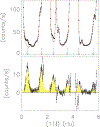
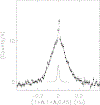




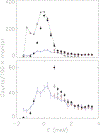




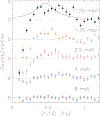
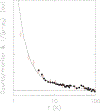

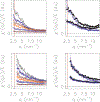


References
-
- Van Vleck J, Rev. Mod. Phys. 34, 681 (1962).
-
- Ruderman MA and Kittel C, Phys. Rev. 96, 99 (1954).
-
- Kasuya T, Prog. Theor. Phys. 16, 45 (1956).
-
- Yosida K, Phys. Rev. 106, 893 (1957).
-
- Kondo J, Prog. Theor. Phys. 32, 37 (1964).
Grants and funding
LinkOut - more resources
Full Text Sources
